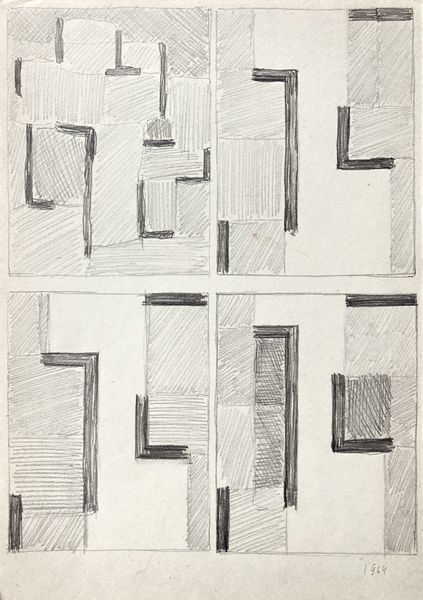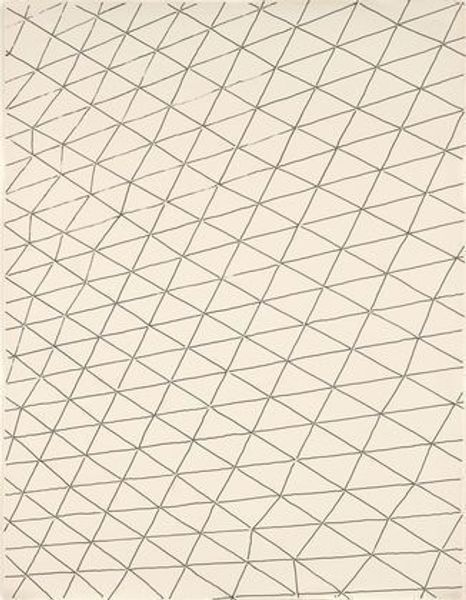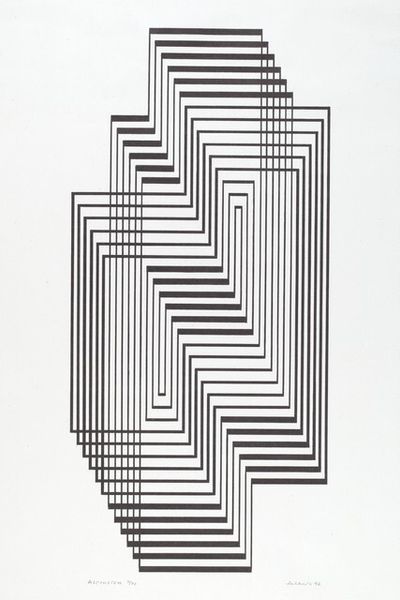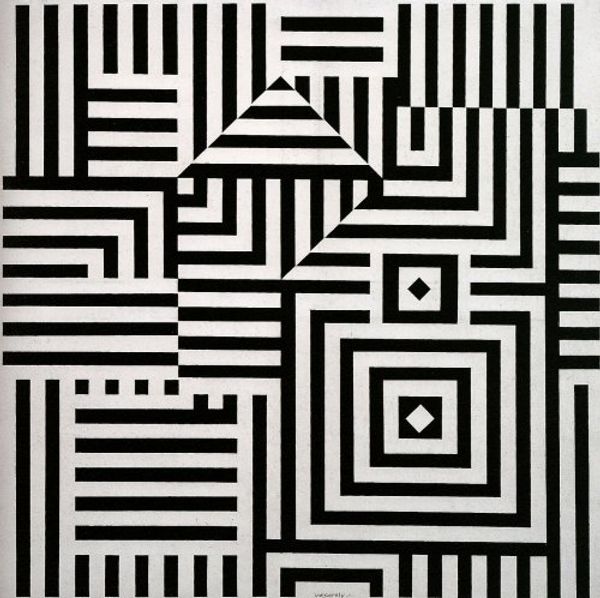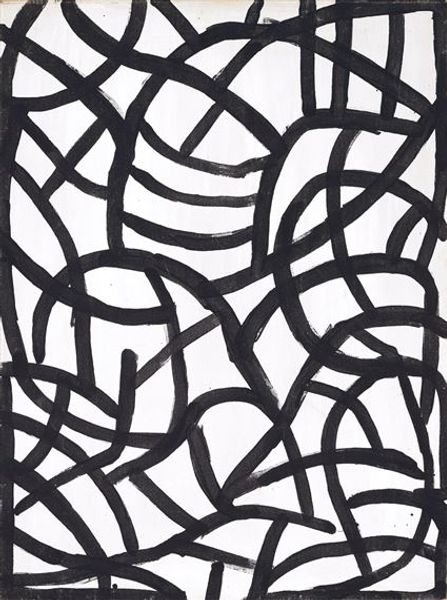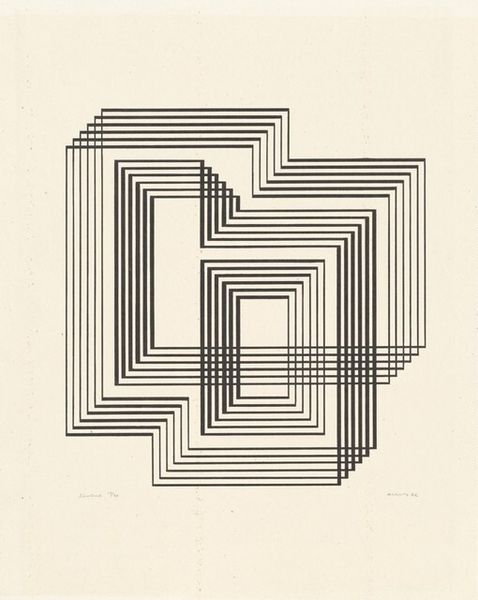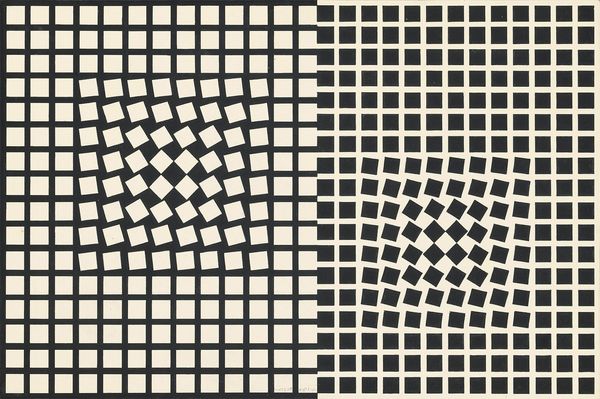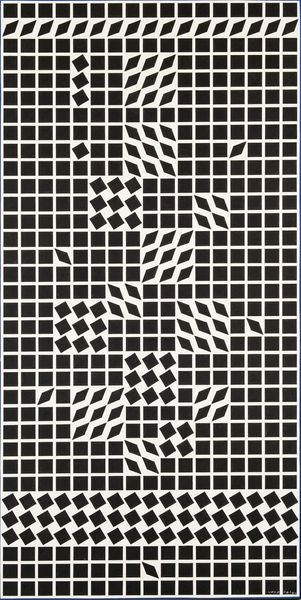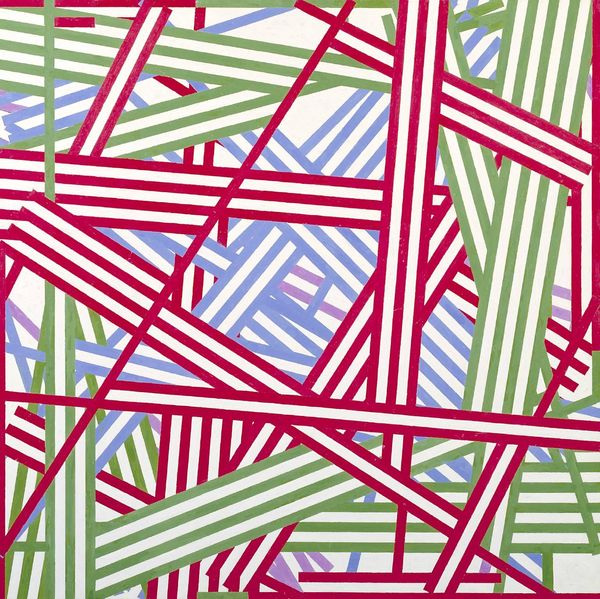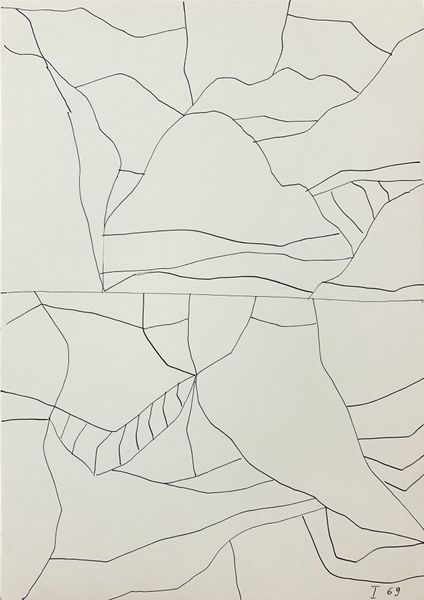
drawing, graphite
#
drawing
#
pattern
#
form
#
geometric
#
geometric-abstraction
#
abstraction
#
line
#
graphite
#
modernism
Copyright: Hryhorii Havrylenko,Fair Use
Curator: Let’s turn our attention to Hryhorii Havrylenko's “Composition,” a graphite drawing created in 1969. What are your initial thoughts? Editor: It makes my eyes dance! There’s a frenetic energy, like a cityscape viewed through a kaleidoscope, or maybe a complex, half-remembered dream. It's black and white but buzzing with latent color. Curator: Absolutely. That energy stems from its geometric abstraction, built entirely of lines and rectangles forming elaborate, almost architectural patterns. Geometric abstraction often signifies an effort to represent an underlying order or structure, pushing beyond superficial appearances. Editor: So it's about something deeper? I definitely get a sense of structure wanting to break free, those lines vibrating as though ready to shift and rearrange themselves. Is there a particular symbolic significance to this kind of repetitive patterning? Curator: Pattern, across many cultures, represents not only structure, but continuity and rhythm, echoing patterns found in nature. In the context of post-war art, geometric abstraction might also suggest the desire to rebuild or redefine order after chaos, through fundamental geometric shapes as building blocks. It appeared in Ukraine alongside a renewed interest in the indigenous folk art which features many types of ornamentation. Editor: Rebuilding from chaos… that resonates. Thinking about the date, 1969, in the Soviet Union...the limited artistic expression under that regime, this work seems quietly subversive, almost like a coded language of form. What do you think? Curator: Indeed, geometric abstraction offered artists an avenue to explore ideas about form and space, offering critique through pure, non-representational shapes that the authorities struggled to censor directly. Havrylenko’s particular approach does strike me as encoding cultural memory, referencing textile design and folk traditions in its obsessive detailing. Editor: It's funny, it feels so both ancient and futuristic, the perfect kind of art that both calms and excites my mind. Well, I see something different every time I look at this one. Curator: And perhaps, that is the drawing's true power - its ability to hold multiple meanings, prompting us to consider themes of structure, freedom, memory, and hope within a relatively small space. Editor: Agreed. It’s left me with a profound sense that meaning hides just beyond our ready comprehension. Like the more closely I study these lines, the less easy they become to summarize into meaning.
Comments
No comments
Be the first to comment and join the conversation on the ultimate creative platform.

